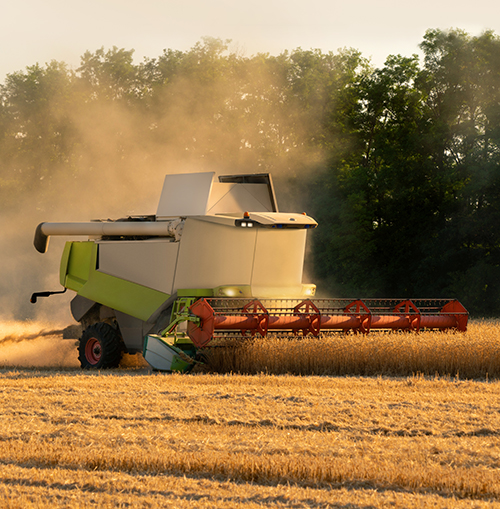Robot-as-a-Service for Smart
Connected Agriculture
By: Tomer Agam

Agriculture is facing the perfect storm. Events in recent years have created urgency for growers to change the way they have been conducting their business for decades. Most markets are moving quickly to data-driven methodologies and implementation of automation tools to increase effectiveness and potential revenue. Yet the agriculture field was not ready to make the move until climate change, farm labor shortages, ever-increasing input costs, and eroding profitability became urgent motivators for farmers to take new steps toward building resilience for the future. One of these steps is the adoption of autonomous machines that take the smart-connected farm to the next level.
Smart connected agriculture is a term frequently used to describe the rapid technological evolution taking place in agriculture across the globe. Some have referred to agriculture as one of the last industrial frontiers to embrace technology, but this is far from being the case. Many of us are familiar with the relatively recent features of lane control in our automobiles, yet our farmers have been working their fields, planting seed, and harvesting for over twenty years already using sensors, computers, and GPS to provide sub-inch lane control accuracy in their fields. Farmers can map the optimal path for their machines and set them loose with an operator on the seat. This person’s function is then to observe as tractors and harvesters carry out their efficient, automated tasks and gather valuable agronomic data that can be used for farm management decisions with a greater financial return.
Advancing technology at a critical time
The need to continue to advance technology in agriculture comes at a critical time as the industry is on the front line of enormous global challenges. Changing weather patterns are narrowing the windows of farming operations. The uptime of machines is paramount. Training and retaining skilled labor add to the challenge. According to research for the USDA by North Carolina State University, led by Al Gutierrez-Li, “The agricultural labor supply in the United States has declined over the last three decades. Farmers across different states and crops have reported experiencing difficulties recruiting and keeping workers every season. The problem has persisted despite wage increases, improvements in working conditions, additional worker benefits, and the introduction of new technologies.”
With climate change, land, water, and other resources will come under ever-increasing pressure. Pesticide and fertilizer costs have increased exponentially as supply channels are challenged.
Today, there is an even greater need to innovate, so that farmers can produce more crops with fewer resources. One solution is to adopt autonomous machines on the farm by way of tractors and
implements that can perform with greater accuracy and precision, reducing input costs, increasing return on investment, and addressing the challenges of labor availability and rising
costs.
Enabling flexibility, performance, and precision
There are a number of different business models for autonomous products. Some ag tech companies are offering robots to perform only specific tasks on the farm, like weeding or harvesting fruit. Others have developed solutions that the farmer needs to learn to operate upon purchase. The robot-as-a-service (RaaS) approach uses tractors that the farmer already has on the farm, and applies the hardware, software, and sensors for communication and navigation. The tractor can be driven manually or operated autonomously. In autonomous mode, the tractor is capable of multiple operations, such as mowing, discing, or spraying. This business model provides the farmer with the flexibility of a conventional tractor and the performance and precision of a robot.
Companies using this model understand that transforming a farm from tractors and machines with operators to a fleet of autonomous tractors under supervision is a big step, and one that needs a trusted partner—not just a provider. The approach places



















